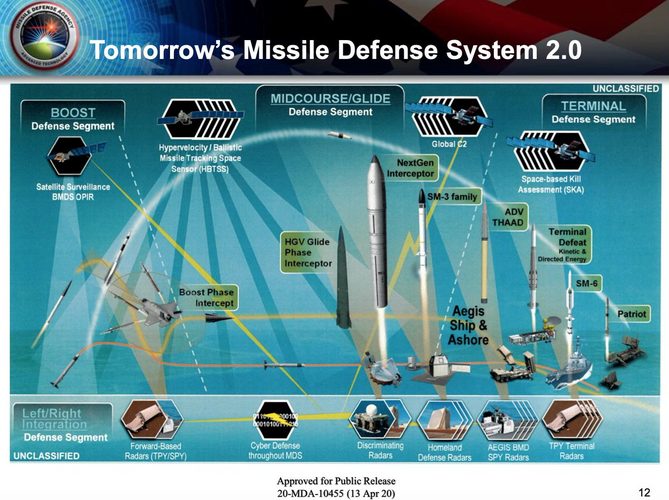You are using an out of date browser. It may not display this or other websites correctly.
You should upgrade or use an alternative browser.
You should upgrade or use an alternative browser.
Defense against Hypersonic Glide Vehicles
- Thread starter Sferrin
- Start date
- Joined
- 21 April 2009
- Messages
- 13,755
- Reaction score
- 7,691
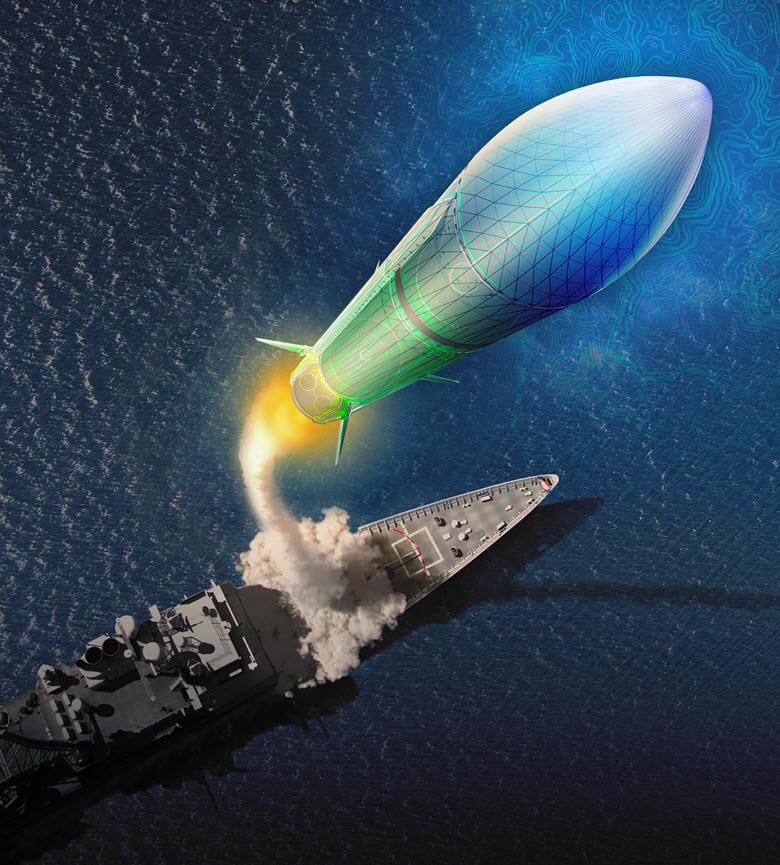
MDA looks to narrow competition for hypersonic missile killer - Breaking Defense
The Missile Defense Agency's request for funds above the 2023 budget for the Glide Phase Interceptor will go towards reducing risks for critical technologies, including seekers, propulsion systems and thermal protection, says Director Vice Adm. Jon Hill.
- Joined
- 21 April 2009
- Messages
- 13,755
- Reaction score
- 7,691
Counter-Hypersonic Program Enters Next Phase
Counter-Hypersonic Program Enters Next Phase
- Joined
- 21 April 2009
- Messages
- 13,755
- Reaction score
- 7,691

Hypersonic Missile Defense ‘A Few Years’ Away, Top Brass Tell Senators - Air Force Magazine
Senators challenged DOD missile defense leaders to explain why hypersonic weapon defense will take so long given Russia's use in Ukraine.
- Joined
- 21 April 2009
- Messages
- 13,755
- Reaction score
- 7,691
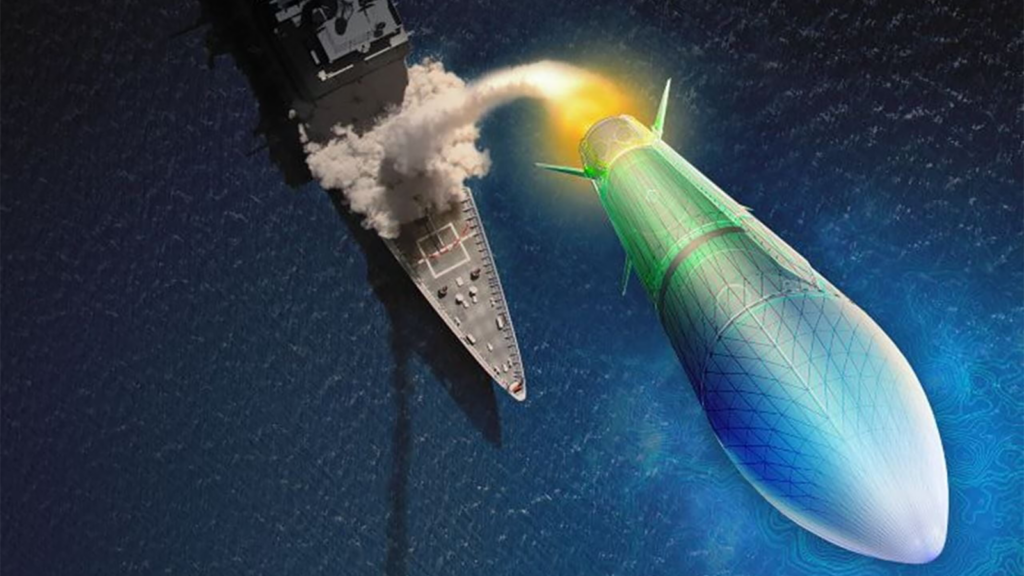
'Just getting started': Too early to say when hypersonic interceptor will go live - Breaking Defense
Lockheed Martin, Northrop Grumman, and Raytheon Missiles and Defense are currently developing concepts for the program.
- Joined
- 21 January 2015
- Messages
- 12,147
- Reaction score
- 16,347
Related to the above post.
The Space Development Agency wants to put an initial batch of satellites capable of tracking hypersonic weapons on orbit in fiscal 2022, according to a draft request for proposals the agency released May 11.
The draft comes as SDA prepares to launch its first tranche of about 20 satellites in FY22, the first step toward its goal of hundreds of interconnected satellites operating in low Earth orbit. The agency is taking a spiral development approach, launching additional satellites with increasingly advanced capabilities in two-year tranches.
The second tranche, to be launched in FY24, will place 150 satellites on orbit.
According to the draft RFP, the agency wants a contractor to design and build eight Wide Field of View, or WFoV, satellites with infrared sensors capable of demonstrating an initial hypersonic weapon-tracking capability.
The eight satellites will also be able to plug into SDA’s transport layer satellites, which will establish a space-based mesh network with optical intersatellite cross links. That will allow data collected by the WFoV sensors to flow from satellite to satellite until it is disseminated over tactical data links to the appropriate system.
The agency released an RFP on May 1 for the first 10 satellites that will make up the transport layer. Those satellites are also set to launch in FY22.
In addition, SDA wants to launch Medium Field of View satellites in mid-FY23 focused on technologies needed for additional performance.
Here are the performance goals laid out for the eight WFoV satellites in the draft RFP:
- Develop and deliver space vehicles integrated with infrared sensors that have sufficient sensitivity and processing to detect hypersonic vehicles from low Earth orbit.
- Characterize performance of satellite-to-satellite and satellite-to-ground communication paths.
- Integrate with a proliferated transport layer to directly provide tracking information over tactical data links.
- Demonstrate interoperability between satellites provided by different vendors.
- Assess how on-board processing, communications infrastructure and advanced algorithms can enable more efficient use of communications bandwidth.
- Develop a concept of operations for a global tracking capability.
- Verify functional and performance requirements to inform future trade studies on communications; space and ground processing; and the numbers, types and capabilities of space-based sensors needed for a full global capability.
Responses to the draft are due May 29.
The release comes shortly after the Defense Advanced Research Projects Agency announced it plans to launch its first Blackjack satellite into orbit later this year, with more to follow in 2021. With Project Blackjack, DARPA seeks to demonstrate the value of low-Earth orbit satellites for the Defense Department. The small satellites will carry advanced technologies that will demonstrate space-based mesh networks and constellation autonomy.
SDA leadership previously said the agency will build off the lessons learned from Blackjack.
View: https://twitter.com/ulalaunch/status/1530204095981793281
An #AtlasV 541 with four side-mounted boosters will perform this U.S. national security launch for @USSF_SSC. The rocket is launching the @SpaceForceDOD's Wide Field of View (WFOV) Testbed satellite and a multi-manifest payload for the @DeptofDefense.
- Joined
- 21 April 2009
- Messages
- 13,755
- Reaction score
- 7,691
Missile Defense Chief Looks to Handle Changing Threat
The Missile Defense Agency is looking to adapt current technologies against the hypersonic threat while looking toward new capabilities.
www.defense.gov
aonestudio
I really should change my personal text
- Joined
- 11 March 2018
- Messages
- 2,964
- Reaction score
- 7,493
Forest Green
ACCESS: Above Top Secret
- Joined
- 11 June 2019
- Messages
- 9,508
- Reaction score
- 17,402
Interesting missile at the end there.
- Joined
- 21 January 2015
- Messages
- 12,147
- Reaction score
- 16,347
- Joined
- 21 January 2015
- Messages
- 12,147
- Reaction score
- 16,347
View: https://twitter.com/ulalaunch/status/1540320887802630144
View: https://youtu.be/4wTA5K-jlR8
Watch a preview video of what you can expect during the #AtlasV rocket's flight directly to geosynchronous orbit to deploy two U.S. national security satellites for @SpaceForceDOD and @USSF_SSC.
aonestudio
I really should change my personal text
- Joined
- 11 March 2018
- Messages
- 2,964
- Reaction score
- 7,493
Missile Defense Agency selects Northrop Grumman Corp and Raytheon Missiles and Defense to move forward in the Glide Phase Interceptor (GPI) prototype project
22-NEWS-0007
June 24, 2022
The Department of Defense has awarded two firm fixed price Other Transaction (OT) Agreement modifications to exercise options; one to Northrop Grumman and one to Raytheon through the Missile Defense Agency’s (MDA) authority under 10 U.S.C. 4022.
Each modification has an approximate value of $41.5M and an anticipated Period of Performance through February 2023. These modifications will allow the performers to continue to further develop and refine their concepts leading to a System Requirements Review—Prototype.
These OT modifications were awarded as option exercises per the terms and conditions of the OT agreement, to support the department’s goal of increased competition by funding two prototype projects , while remaining flexible to align with evolving Department of Defense strategies and priorities.
“Today’s awards are an important step toward increasing the capacity of our Missile Defense System and providing a new capability to the Warfighter,” said VADM Jon Hill, Director, Missile Defense Agency. “GPI will play an important role in our regional hypersonic defense, and our acquisition strategy is ensuring that the department maximizes innovation to keep pace with rapidly advancing threats.”
The GPI concept fits into the MDA’s missile defense architecture to provide the warfighter and its allies with reliable layered defense against regional hypersonic missile threats.
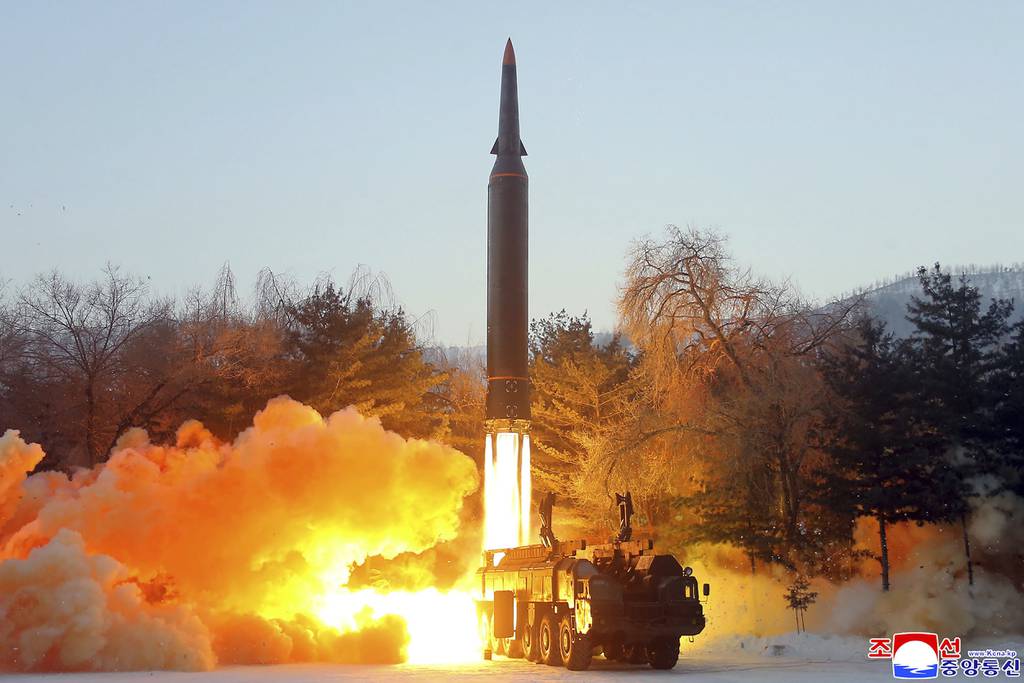
Raytheon, Northrop advance in competition to develop hypersonic weapons interceptor
The Missile Defense Agency awarded contracts to Raytheon and Northrop Grumman to continue development of its Glide Phase Interceptor designed to take out hypersonic threats.
MDA told Defense News in an email that the agency still has the ability to pull Lockheed back into the GPI effort later “if required.”
- Joined
- 21 January 2015
- Messages
- 12,147
- Reaction score
- 16,347
The Wide Field of View GEO satellite, designed by Millennium Space Systems, will test ways to collect and report early detection defense data.
Learn more about WFOV and the #USSF12 mission..
View: https://twitter.com/BoeingSpace/status/1542605728304840705
- Joined
- 21 January 2015
- Messages
- 12,147
- Reaction score
- 16,347
View: https://twitter.com/ulalaunch/status/1543018935888629761
Liftoff of Atlas V on USSF-12!
bit.ly/av_ussf12
by United Launch Alliance
- Joined
- 21 January 2015
- Messages
- 12,147
- Reaction score
- 16,347
- Joined
- 21 January 2015
- Messages
- 12,147
- Reaction score
- 16,347
View: https://mobile.twitter.com/ulalaunch/status/1543098458000728064
View: https://mobile.twitter.com/ulalaunch/status/1543102318312292354
Separation confirmed! The United Launch Alliance #AtlasV rocket has released the Wide Field of View (WFOV) Testbed satellite to demonstrate new missile early warning capabilities for the U.S. @SpaceForceDoD.
#PartnersInSpaceAtlas V USSF-12
bit.ly
View: https://mobile.twitter.com/ulalaunch/status/1543102318312292354
Separation confirmed! The USSF-12 Ring spacecraft for the Department of Defense's Space Test Program has been deployed by the #AtlasV rocket's Centaur upper stage, completing today's launch for the nation.
#PartnersInSpaceAtlas V USSF-12
bit.ly
Forest Green
ACCESS: Above Top Secret
- Joined
- 11 June 2019
- Messages
- 9,508
- Reaction score
- 17,402
U.S. military’s newest weapon against China and Russia: Hot air
The Pentagon is quietly transitioning high-altitude balloon projects to the military services.
The Pentagon is working on a new plan to rise above competition from China and Russia: balloons.
The high-altitude inflatables, flying at between 60,000 and 90,000 feet, would be added to the Pentagon’s extensive surveillance network and could eventually be used to track hypersonic weapons.
aonestudio
I really should change my personal text
- Joined
- 11 March 2018
- Messages
- 2,964
- Reaction score
- 7,493
Forest Green
ACCESS: Above Top Secret
- Joined
- 11 June 2019
- Messages
- 9,508
- Reaction score
- 17,402
Forest Green
ACCESS: Above Top Secret
- Joined
- 11 June 2019
- Messages
- 9,508
- Reaction score
- 17,402
I'll save them the time, there's nothing proportionate about the graphic. The GBI is 16.6m tall and an SM-3 is 6.55m tall, as is SM-6.If that is a proportionate representative of the NGI next to SM-3 and THAAD can anyone smarter than me (most of you here at SPF) estimate it’s dimensions?
- Joined
- 3 June 2011
- Messages
- 18,335
- Reaction score
- 12,233
The scales are all over the place. Shows PAC-3 MSE being larger than SM-3 Block IIA.If that is a proportionate representative of the NGI next to SM-3 and THAAD can anyone smarter than me (most of you here at SPF) estimate it’s dimensions?
- Joined
- 21 January 2015
- Messages
- 12,147
- Reaction score
- 16,347
More details about the recently launched WFOV satellite.

 breakingdefense.com
breakingdefense.com
Built by L3Harris, the “large format” focal plane sensor — at 4,000 pixels by 4,000 pixels (4k X 4k) — will be able to track the infrared plumes of missiles over a wider swatch of the Earth at higher resolutions than SBIRS, Bogstie said, adding that it also will feature “reduced noise” in its signal.
“Launching WFOV comes at an opportune time with all of the threats out there now. What’s setting WFOV apart is the 4kx4k staring focal plane array, making it so you’re more likely to catch threats,” Millennium CEO Jason Kim told Breaking Defense in an email. “And WFOV is proving out various technologies and algorithms on orbit which will be transitioned into future programs to keep ahead of the threats.”

Experimental missile warning satellite will test tech for Space Force use in multiple orbits - Breaking Defense
The WFOV satellite, being built by Boeing's Millennium Space Systems, is expected to launch this evening on a United Launch Alliance (ULA) Atlas 5 rocket, under the National Security Space Launch program.
- Joined
- 21 January 2015
- Messages
- 12,147
- Reaction score
- 16,347
View: https://twitter.com/torybruno/status/1544702984881332224
New interesting secret viewing spot. Crank up the volume and don’t tell Pad Safety! #USSF12
- Joined
- 21 April 2009
- Messages
- 13,755
- Reaction score
- 7,691
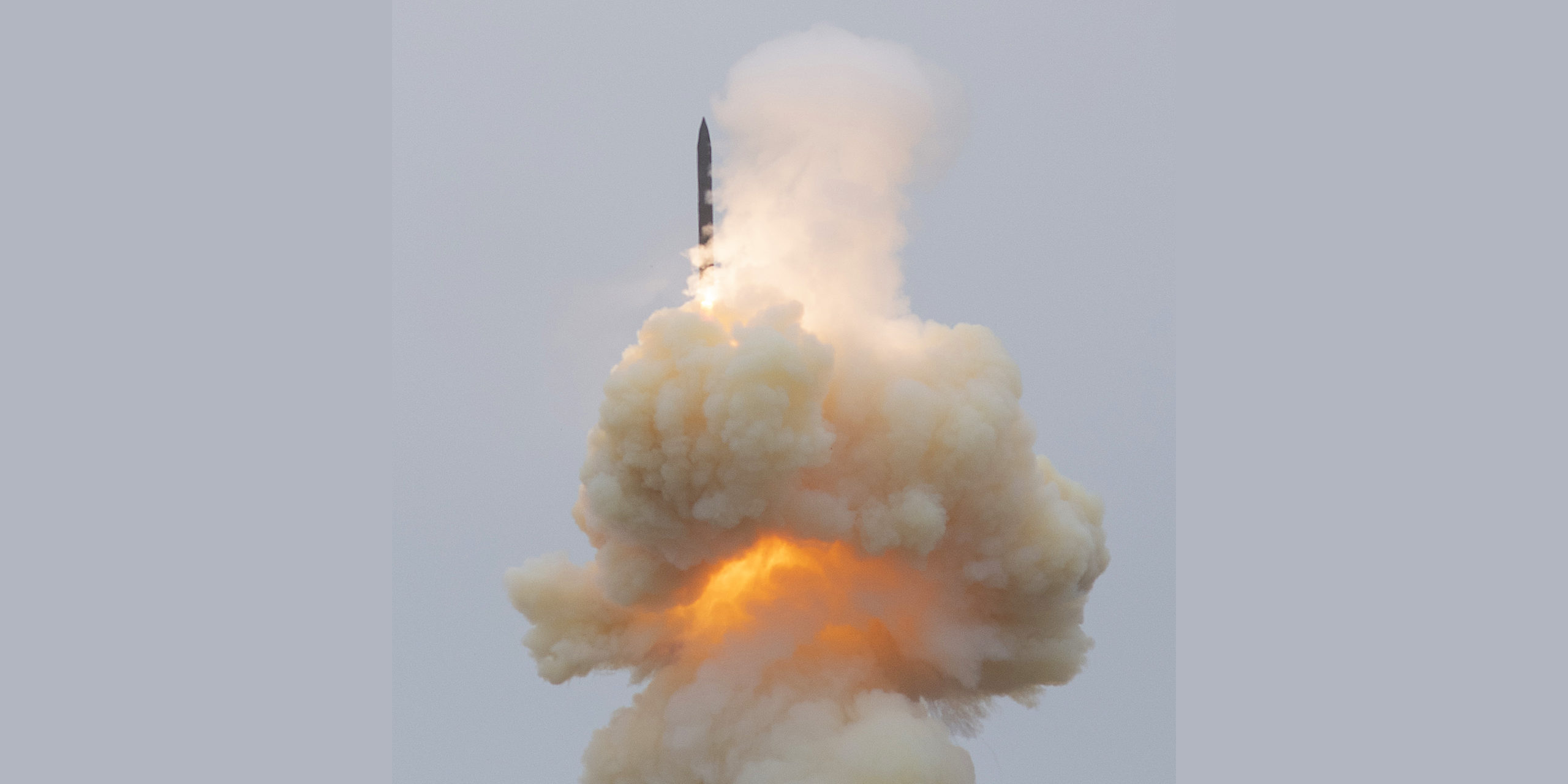
Tracking Hypersonics in Real Time - Air Force Magazine
New capabilities are required—now—to combat long- range precision missiles being tested by adversaries.
jsport
what do you know about surfing Major? you're from-
- Joined
- 27 July 2011
- Messages
- 7,732
- Reaction score
- 5,751

Episode 83 - Defeating Adversary Strikes: Next Gen Missile Warning and Tracking
Episode 83 – Defeating Adversary Strikes: Next Gen Missile Warning and Tracking Episode Summary: In Episode 83 of the Aerospace Advantage podcast, Defeating Adversary Strikes: Next Gen Missile Warning and Tracking, John Baum chats with Mitchell Institute’s...
- Joined
- 21 April 2009
- Messages
- 13,755
- Reaction score
- 7,691

North America Is a Region, Too
Download the Report U.S. air and missile defense efforts have long been characterized by a striking dichotomy. Defenses for the homeland have largely focused on long-range ballistic threats, while cruise missile defense and other air defense efforts have focused on regional and force protection...
And nothing space-based…
Forest Green
ACCESS: Above Top Secret
- Joined
- 11 June 2019
- Messages
- 9,508
- Reaction score
- 17,402
Not officially, except sensors.And nothing space-based…
- Joined
- 3 June 2011
- Messages
- 18,335
- Reaction score
- 12,233
Think simplified SM-3 3rd stages, with their KKVs in "sheds" in space. Brilliant Pebbles.I don’t see how a kinetic space based option could be built for any reasonable amount of money.
Forest Green
ACCESS: Above Top Secret
- Joined
- 11 June 2019
- Messages
- 9,508
- Reaction score
- 17,402
Plus it's much cheaper to achieve now with Reusable launch vehicles. You could throw several into orbit with one launch, come back and repeat.Think simplified SM-3 3rd stages, with their KKVs in "sheds" in space. Brilliant Pebbles.I don’t see how a kinetic space based option could be built for any reasonable amount of money.
Orbit mechanics makes it hard to do without a fairly vast number of satellites that seems impractical to me. It is easy now adays to spam starlink type satellites into orbit but operational weapons platforms would have to be larger and more expensive.Think simplified SM-3 3rd stages, with their KKVs in "sheds" in space. Brilliant Pebbles.I don’t see how a kinetic space based option could be built for any reasonable amount of money.
EDIT TO ADD: the cost and weight per interceptor will be a huge input into that calculation. For a LEO constellation of interceptors, the majority of them will be out of range at any given time. On top of that, once specific satellites are depleted, there is a hole in the coverage that can't be filled without another lifter launch. I think space based interception is impractical; surface launch allows the defensive missiles to be clustered around a particular target or at least theater.
Last edited:
Forest Green
ACCESS: Above Top Secret
- Joined
- 11 June 2019
- Messages
- 9,508
- Reaction score
- 17,402
Not at all, these devices would be very small, hence why they're called pebbles. They're already moving at high speed (~8km/s) because they're in orbit. We're basically talking about GBI KKV vehicles + bus orbiting in a swarm. I believe the number required as per the Star Wars plans were 4063. This would leave each KKV no more than 200km from any intercept path. Furthermore, the only way a whole develops is when a KKV kills a missile, likely several to make a sizeable whole. This can mean that up to 10+ warheads are knocked out at once per missiles. Then GBI gets a crack mid-course, then SM-3 Blk2A/1B, then brilliant pebbles gets a second crack before re-entry, then THAAD... or maybe even a powerful, ground-based, solid state laser arrayOrbit mechanics makes it hard to do without a fairly vast number of satellites that seems impractical to me. It is easy now adays to spam starlink type satellites into orbit but operational weapons platforms would have to be larger and more expensive.
EDIT TO ADD: the cost and weight per interceptor will be a huge input into that calculation. For a LEO constellation of interceptors, the majority of them will be out of range at any given time. On top of that, once specific satellites are depleted, there is a whole in the coverage that can't be filled without another launch. I think space based interception is impractical; surface launch allows the defensive missiles to be clustered around a particular target or at least theater.
If they are to have a fast de-orbit and any significant cross range envelope, I think we are talking about something at least the size of the SM-3 upper stage that sferrin references. In fact I think it's worse than that, because the interceptor also has to be capable of re-entry to the upper atmosphere at orbital speeds (something SM-3 doesn't need to do). It will need a heat shield of some kind. Brilliant Pebbles not only was of questionable practicality, it also was completely exo-atmospheric. Look at something like FOBS and how large the final re-entry booster is in order to do a fast, on demand de-orbit. The energy of the satellite in LEO is only helpful if the target is coming on a relatively reciprocal bearing otherwise it's something that the interceptor has to overcome, not use for effect.Not at all, these devices would be very small, hence why they're called pebbles. They're already moving at high speed (~8km/s) because they're in orbit. We're basically talking about GBI KKV vehicles + bus orbiting in a swarm. I believe the number required as per the Star Wars plans were 4063. This would leave each KKV no more than 200km from any intercept path. Furthermore, the only way a whole develops is when a KKV kills a missile, likely several to make a sizeable whole. This can mean that up to 10+ warheads are knocked out at once per missiles. Then GBI gets a crack mid-course, then SM-3 Blk2A/1B, then brilliant pebbles gets a second crack before re-entry, then THAAD... or maybe even a powerful, ground-based, solid state laser arrayOrbit mechanics makes it hard to do without a fairly vast number of satellites that seems impractical to me. It is easy now adays to spam starlink type satellites into orbit but operational weapons platforms would have to be larger and more expensive.
EDIT TO ADD: the cost and weight per interceptor will be a huge input into that calculation. For a LEO constellation of interceptors, the majority of them will be out of range at any given time. On top of that, once specific satellites are depleted, there is a whole in the coverage that can't be filled without another launch. I think space based interception is impractical; surface launch allows the defensive missiles to be clustered around a particular target or at least theater.
View: https://www.youtube.com/watch?v=yDCzpAuWM1w&t=1171s
Forest Green
ACCESS: Above Top Secret
- Joined
- 11 June 2019
- Messages
- 9,508
- Reaction score
- 17,402
SM-3 upper stage yes, or maybe a GBI bus. Which has a trivial weight compared to most space launches. You would only need to de-orbit for HGVs, for normal ballistic missiles your orbit just has to be in the correct spot when the missile passes.If they are to have a fast de-orbit and any significant cross range envelope, I think we are talking about something at least the size of the SM-3 upper stage that sferrin references. In fact I think it's worse than that, because the interceptor also has to be capable of re-entry to the upper atmosphere at orbital speeds (something SM-3 doesn't need to do). It will need a heat shield of some kind. Brilliant Pebbles not only was of questionable practicality, it also was completely exo-atmospheric. Look at something like FOBS and how large the final re-entry booster is in order to do a fast, on demand de-orbit. The energy of the satellite in LEO is only helpful if the target is coming on a relatively reciprocal bearing otherwise it's something that the interceptor has to overcome, not use for effect.
The second part actually depends on the altitude of the intercept. Some satellites on elliptical orbits can get down to about 70km, there really isn't much air up there. The KKV may need to be aerodynamically manoeuvrable though, but we're still fairly small. The missile will always be slower than orbital velocity in the boost phase.
Trivial weight compared to most to orbit launchers is a given. The question is how heavy and with how much envelope outside their orbital inclination. IMO the greatest threat is high altitude gliders and scramjets that avoid (or largely avoid) an exo atmospheric ballistic trajectory.
You're not going to get much dwell time/coverage from a satellite with high orbital eccentricity. A low perigee would presumably also shorten the lifespan of the satellite or increase its fuel requirements due to atmospheric drag.
Some kind of partial re-entry (and heat protection) is a given for a glider intercept, or else the target itself wouldn't be aerodynamically maneuverable (or possibly even detectable by the new sensor layer). So we are talking about a re-entry that probably will likely place more heat stress on the interceptor than on target, since the interceptor is dropping from an orbital velocity down into the upper atmosphere and the target is coasting from a sub orbital boost.
I think the altitudes and velocities needed to create a constant coverage satellite constellation of interceptors able to deorbit to intercept in upper atmosphere against a HBG make the idea impractical. Ballistic weapons yes, but I think the US already has a fair number of ground based solutions for that which can be locally/regionally based near the defended targets. I'll leave it at that.
You're not going to get much dwell time/coverage from a satellite with high orbital eccentricity. A low perigee would presumably also shorten the lifespan of the satellite or increase its fuel requirements due to atmospheric drag.
Some kind of partial re-entry (and heat protection) is a given for a glider intercept, or else the target itself wouldn't be aerodynamically maneuverable (or possibly even detectable by the new sensor layer). So we are talking about a re-entry that probably will likely place more heat stress on the interceptor than on target, since the interceptor is dropping from an orbital velocity down into the upper atmosphere and the target is coasting from a sub orbital boost.
I think the altitudes and velocities needed to create a constant coverage satellite constellation of interceptors able to deorbit to intercept in upper atmosphere against a HBG make the idea impractical. Ballistic weapons yes, but I think the US already has a fair number of ground based solutions for that which can be locally/regionally based near the defended targets. I'll leave it at that.
Forest Green
ACCESS: Above Top Secret
- Joined
- 11 June 2019
- Messages
- 9,508
- Reaction score
- 17,402
From what I understand, they still fly at about 60-70km where the air density is fairly superficial, you need some heat resistance but not as much as a full RV. Even if you do need a full RV, the full weight of an ICBM RV is ~400-600lbs and for a KKV, you won't need anything that big, for the KKV bus + KKV you might, so that's really an upper limit. We can't really be sure of the target speed, the claims for Avangard's speed vary wildly.Trivial weight compared to most to orbit launchers is a given. The question is how heavy and with how much envelope outside their orbital inclination. IMO the greatest threat is high altitude gliders and scramjets that avoid (or largely avoid) an exo atmospheric ballistic trajectory.
You're not going to get much dwell time/coverage from a satellite with high orbital eccentricity. A low perigee would presumably also shorten the lifespan of the satellite or increase its fuel requirements due to atmospheric drag.
Some kind of partial re-entry (and heat protection) is a given for a glider intercept, or else the target itself wouldn't be aerodynamically maneuverable (or possibly even detectable by the new sensor layer). So we are talking about a re-entry that probably will likely place more heat stress on the interceptor than on target, since the interceptor is dropping from an orbital velocity down into the upper atmosphere and the target is coasting from a sub orbital boost.
I think the altitudes and velocities needed to create a constant coverage satellite constellation of interceptors able to deorbit to intercept in upper atmosphere against a HBG make the idea impractical. Ballistic weapons yes, but I think the US already has a fair number of ground based solutions for that which can be locally/regionally based near the defended targets. I'll leave it at that.
Depends on the design of satellite as regards longevity.

Where, exactly, is the edge of space? It depends on who you ask.
With more countries and commercial companies heading into the stratosphere, the debate about how to define outer space is heating up.
It does but the cost of adding a non-reusable launcher to each KKV is significant, with reusable launchers, you only pay for the fuel and the KKV.
Forest Green
ACCESS: Above Top Secret
- Joined
- 11 June 2019
- Messages
- 9,508
- Reaction score
- 17,402
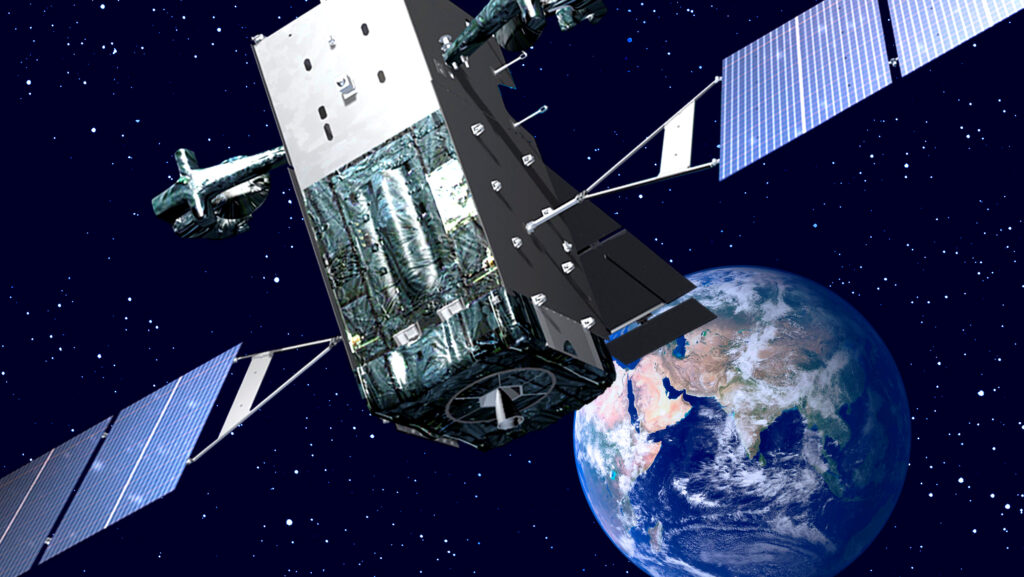
Speed vs. oversight: Middle Tier Acquisition draws lawmakers' concern - Breaking Defense
When it comes to MTAs, Eric Lofgren, a defense acquisition specialist at George Mason University, told Breaking Defense that "GAO and OSD seem to be struggling with how to baseline and conduct oversight of these programs."
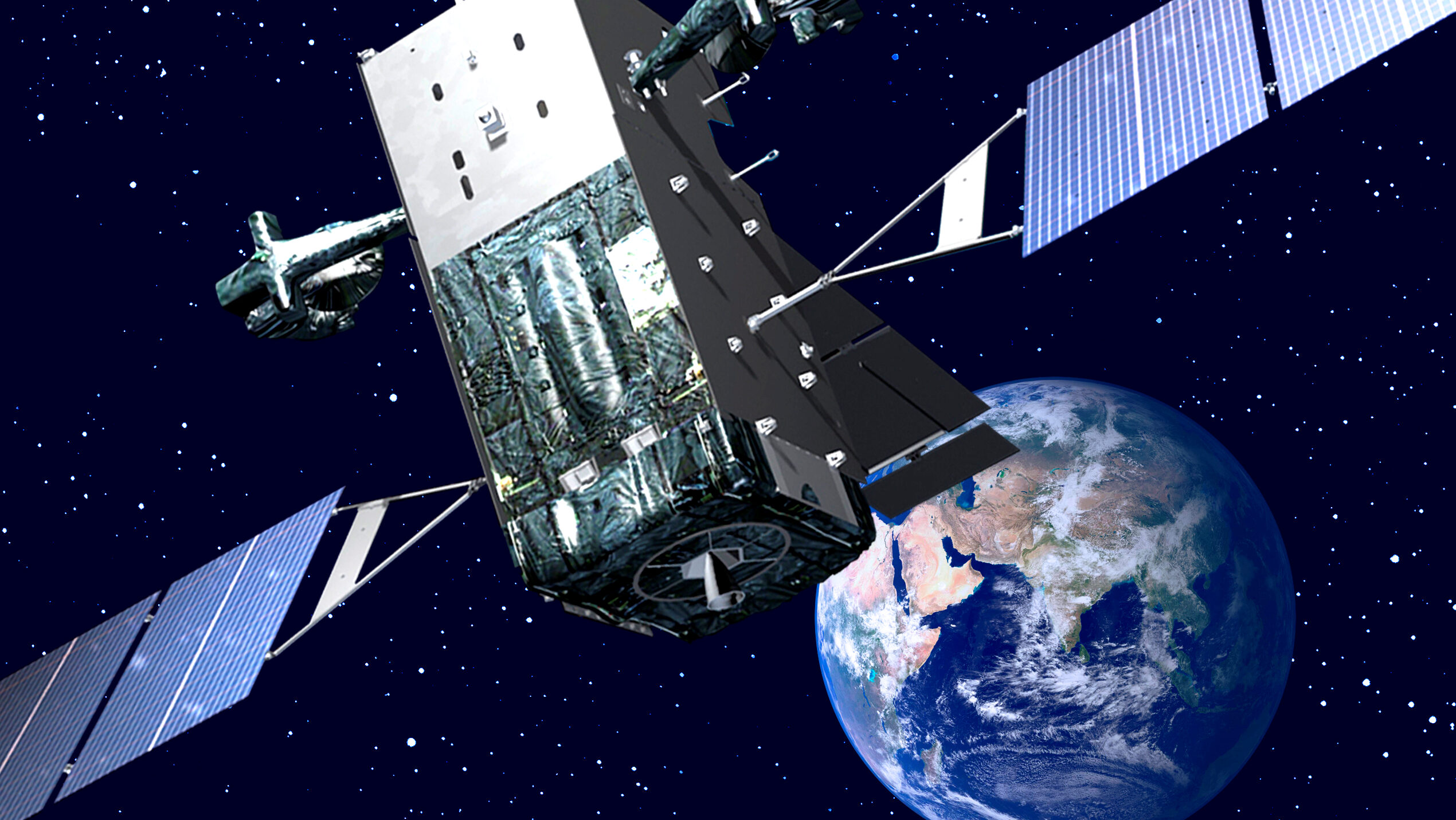
Current SBIRS missile warning satellites (pictured) will be replaced by the Next Gen OPIR constellation. (Credit Lockheed Martin, via US Air Force)
Firefinder
ACCESS: Top Secret
- Joined
- 5 October 2019
- Messages
- 1,048
- Reaction score
- 1,898
Another thing to factor in is Starlink.
Cause that system basically proves that a low low orbit satellite constellation is very affordable once you get the factory working.
Theres like 2000 of the 260 kilogram/560 pound starlink sats up at the moment. With them just launch another 60 of the things last week for a goal of 4000 by the end of tge year.
Eyeah the US DOD be able to do it easily as a rounding error in the budget.
If they haven't already, there was talk bout declassified something to do with Space a few months back...
Cause that system basically proves that a low low orbit satellite constellation is very affordable once you get the factory working.
Theres like 2000 of the 260 kilogram/560 pound starlink sats up at the moment. With them just launch another 60 of the things last week for a goal of 4000 by the end of tge year.
Eyeah the US DOD be able to do it easily as a rounding error in the budget.
If they haven't already, there was talk bout declassified something to do with Space a few months back...
Similar threads
-
Missile Defense Test Succeeds Against Medium-Range Ballistic Missile Targets
- Started by seruriermarshal
- Replies: 0
-
-
Strategic Capabilities Office - Hypervelocity Gun Weapon - Missile Defense
- Started by bring_it_on
- Replies: 105
-
-
Multi-Object Kill Vehicle (MOKV)
- Started by marauder2048
- Replies: 41

